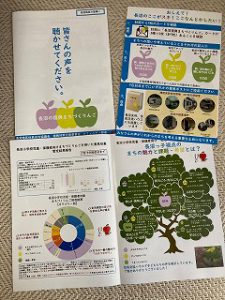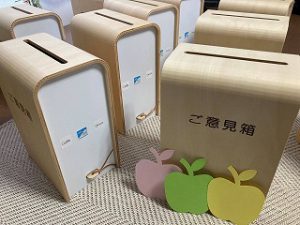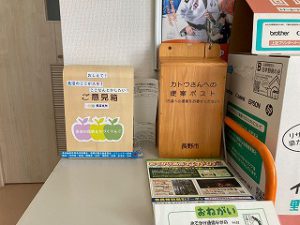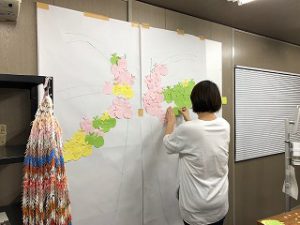“Apples for Disaster Recovery and Community Development” initiative launched to visualize the voices of Naganuma residents [Nagano/Japan]
“What will happen to our community now?”, “I want to discuss with others the future of our hometown after being stricken by disaster”, or “But we shouldn’t organize a meeting amid the pandemic…” Many communities who are experiencing post-disaster recovery in this pandemic situation must also be experiencing similar dilemmas: not being able to discuss and interact face-to-face, being forced to make choices to keep up with the pace of decision-making required by governments, and these are causing divisions and isolation among residents.
Naganuma district, Nagano city, is no exception, which was seriously affected by the Typhoon Hagibis in 2019. The ratio of the over-65 population against the total population had been high at more than 40% even before the disaster, making the entire community quite vulnerable to the COVID-19 outbreak. This prompted SEEDS Asia, to organize last year, eight online lectures delivered by researchers and practitioners of different fields, so important moves were made towards post-disaster reconstruction and community development.
Though the common message emphasized by the different lecturers was for the district to draw up a blueprint for the future of the community, a step forward was not immediately taken, particularly due to the “digital divide” among the residents, where only a limited number of people could fully utilize ICT technology. The internet and digital gadgets enabled some people to secure the means of communication to an extent, but did not incorporate every residents’ voice for consensus discussions and decision-making. This is also an unfortunate situation in many places in Japan.
In this challenging situation, the Naganuma District Community Council and the District Disaster Recovery Planning Committee established a “Community Recovery Subcommittee” consisting of diverse members, to collect the voices of every single resident. SEEDS Asia joined this Subcommittee to assist members in developing a tool for collecting and analyzing opinions, so that the opinions could form the basis for developing the community’s blueprint.
As Naganuma district is the hometown for the “Shinshu apples” and also boasts a large apple production sector, the tool that was developed for this purpose was an apple-shaped card, named the “Apples for Disaster Recovery and Community Development,” which enabled people to write down their thoughts and opinions on the topics being discussed. Pilot-testing was implemented by distributing and collecting of the “Apple” cards to and from the Naganuma elementary school students and their guardians in July. The collected opinions proved that the experience of reciprocity of helping and being helped in the 2019 flood disaster is actually considered a beauty (that is, warmth and kindness) of the community. Children’s love towards their hometown as well as their frustrations, such as not having access to playgrounds near their homes after the disaster, were clearly addressed. The children took the initiative to find their community’s challenges and charms, and these “Apples” will be rolled out to the entire community with the cooperation of the District Community Council.
In place of losing the ability to discuss face-to-face, we can create opportunities to listen to the residents who usually cannot attend meetings, so unheard voices could be visualized. Opinion boxes for submission of the “Apple” cards are located throughout the community as well as in temporary housing complexes where residents whose houses were damaged by the disaster currently are living. We are hoping that the results will be collected in September and be a great resource for drawing the future blueprint of Naganuma.




Tags:
09/02/2021